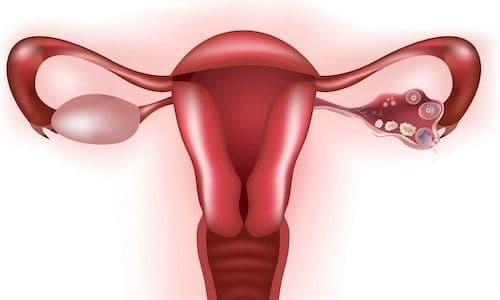Ovarian Cancer: Diagnosis and Staging
Cancer
Obie Editorial Team

If you have any of the most common symptoms of ovarian cancer, which include frequent bloating, pain in the pelvis, difficulty eating, and urinary issues, it is important to schedule an appointment with your doctor. This will determine if the symptoms are caused by ovarian cancer or another health issue. Your doctor will often request information regarding your personal and family medical history at your appointment.
Ovarian cancer testing
The most common tests for ovarian cancer include:
Physical Exam: Your physician will check your general health by pressing on your abdomen to feel for tumors or an abnormal fluid buildup. A fluid sample may be taken to check for ovarian cancer cells.
Pelvic Exam: Your physician will examine your ovaries and nearby organs to check for any abnormalities. However, a Pap test will not be used to collect ovarian cancer cells since it is primarily used to diagnose cervical cancer.
Blood Test: Blood tests will be used to check for levels of CA-125, a substance on the surface of ovarian cancer cells and some healthy tissue. High levels of CA-125 could indicate ovarian cancer, yet this testing cannot be used as the sole diagnosis of ovarian cancer. High CA-125 levels could also indicate endometriosis or uterine fibroids, so this test is not an absolute indicator of cancer.
Ultrasound: An ultrasound will examine the ovaries and internal organs to look for an ovarian tumor. A transvaginal ultrasound may also be used to better check the ovaries.
Biopsy: A biopsy will remove tissue or fluid to check for ovarian cancer cells. Depending upon the results of a blood test and ultrasound, a laparotomy may be recommended to remove fluid and tissue from the abdomen. Laparotomy surgery is often necessary to confirm the diagnosis of ovarian cancer.
If early ovarian cancer is detected, a laparoscopic procedure may be used to remove a small cyst or tumor through a minimal incision in the abdomen. This procedure can also be used to detect if ovarian cancer has spread.
Ovarian Cancer Staging
T categories for ovarian cancer
Tx: No description of the tumor's extent is possible because of incomplete information.
T1: The cancer is confined to the ovaries -- one or both.
- T1a: The cancer is only inside one ovary - it isn’t on the outside of the ovary, it doesn’t penetrate the tissue covering the ovary (called the capsule) and isn’t in fluid taken from the pelvis.
- T1b: The cancer is inside both ovaries but doesn't penetrate to the outside and isn’t in fluid taken from the pelvis (like T1a except the cancer is in both ovaries).
- T1c: The cancer is in one or both ovaries and is either on the outside of an ovary, grown through the capsule of an ovary, or is in fluid taken from the pelvis.
T2: The cancer is in one or both ovaries and is extending into pelvic tissues.
- T2a: Cancer has spread (metastasized) to the uterus and/or the fallopian tubes but isn’t in fluid taken from the pelvis.
- T2b: Cancer has spread to pelvic tissues besides the uterus and fallopian tubes but it isn’t in fluid taken from the pelvis.
- T2c: Cancer has spread to the uterus and/or fallopian tubes and/or other pelvic tissues (like T2a or T2b) and is also in fluid taken from the pelvis.
T3: The cancer is in one or both ovaries and has spread to the abdominal lining outside the pelvis. This lining is called the peritoneum.
- T3a: The cancer metastases are so small that they cannot be seen except under a microscope.
- T3b: The cancer metastases can be seen but no tumor is bigger than 2 centimeters (0.8 inches).
- T3c: The cancer metastases are larger than 2 centimeters (0.8 inches).
T categories for fallopian tube cancer
Tx: No description of the tumor's extent is possible because of incomplete information.
Tis: Cancer cells are only in the inner lining of the fallopian tube. They haven’t grown into deeper layers. Also called carcinoma in situ.
T1: The cancer is in the fallopian tube(s), but has not grown outside of them.
- T1a: The cancer is only inside one fallopian tube -- it has not grown through to the outside of the tube. It hasn't grown through the tissue covering the tumor (called the capsule) and isn’t in fluid taken from the pelvis.
- T1b: The cancer is growing in both fallopian tubes -- it has not grown through to the outside of the tube. It hasn't grown through the tissue covering the tumor (called the capsule) and isn’t in fluid taken from the pelvis (like T1a but with a tumor in both tubes).
- T1c: The tumor is in one or both fallopian tubes and has either grown through the outer wall of the tube or cancer cells are found in fluid taken from the pelvis.
T2: The tumor has grown from one or both fallopian tubes into the pelvis.
- T2a: Cancer is growing into the uterus and/or the ovaries.
- T2b: Cancer is growing into other parts of the pelvis.
- T2c: Cancer has spread from the fallopian tubes into other parts of the pelvis and cancer cells are found in fluid taken from the pelvis (either from ascites or from washings obtained at surgery.
T3: The tumor has spread outside the pelvis to the lining of the abdomen.
- T3a: The areas of cancer spread outside the pelvis can only be found when the area is biopsied and looked at under the microscope.
- T3b: The areas of spread can be seen with the naked eye, but are 2 cm or less in size (less than an inch).
- T3c: The areas of spread are greater than 2 cm in size.
N categories
N categories indicate whether or not cancer has spread to regional (nearby) lymph nodes.
Nx: No description of lymph node involvement is possible because of incomplete information.
N0: No lymph node involvement.
N1: Cancer cells are found in the lymph nodes close to the tumor.
M categories
M categories indicate whether or not cancer has spread to distant organs, such as the liver, lungs, or non-regional lymph nodes.
M0: No distant spread.
M1: Cancer has spread to the inside of the liver, to the lungs, or other organs.
Stage grouping
Once a patient's T, N, and M categories have been determined, this information is combined in a process called stage grouping to determine the stage, expressed in Roman numerals from stage I (the least advanced stage) to stage IV (the most advanced stage). The following table illustrates how TNM categories are grouped together into stages. This stage grouping also applies to fallopian tube carcinoma.
What the stages of ovarian cancer mean
Stage I
The cancer is still contained within the ovary (or ovaries). It has not spread outside the ovary.
Stage IA (T1a, N0, M0): Cancer has developed in one ovary, and the tumor is confined to the inside of the ovary. There is no cancer on the outer surface of the ovary. Laboratory examination of washings from the abdomen and pelvis did not find any cancer cells.
Stage IB (T1b, N0, M0): Cancer has developed within both ovaries without any tumor on their outer surfaces. Laboratory examination of washings from the abdomen and pelvis did not find any cancer cells.
Stage IC (T1c, N0, M0): The cancer is present in one or both ovaries and one or more of the following are present:
- Cancer is on the outer surface of at least one of the ovaries.
- In the case of cystic tumors (fluid-filled tumors), the capsule (outer wall of the tumor) has ruptured (burst)
- Laboratory examination found cancer cells in fluid or washings from the abdomen.
Stage II
The cancer is in one or both ovaries and has involved other organs (such as the uterus, fallopian tubes, bladder, the sigmoid colon, or the rectum) within the pelvis. It has not spread to lymph nodes, the lining of the abdomen (called the peritoneum), or distant sites.
Stage IIA (T2a, N0, M0): Cancer has spread to or has invaded (grown into) the uterus or the fallopian tubes, or both. Laboratory examination of washings from the abdomen did not find any cancer cells.
Stage IIB (T2b, N0, M0): Cancer has spread to other nearby pelvic organs such as the bladder, the sigmoid colon, or the rectum. Laboratory examination of fluid from the abdomen did not find any cancer cells.
Stage IIC (T2c, N0, M0): Cancer has spread to pelvic organs as in stages IIA or IIB and cancer cells were found when the fluid from the washings from the abdomen was examined under a microscope.
Stage III
Cancer involves one or both ovaries, and one or both of the following are present: (1) cancer has spread beyond the pelvis to the lining of the abdomen; (2) cancer has spread to lymph nodes.
Stage IIIA (T3a, N0, M0): During the staging operation, the surgeon may be able to see cancer involving the ovary or ovaries, but no cancer is visible to the naked eye in the abdomen and cancer has not spread to lymph nodes. However, when biopsies are checked under a microscope, tiny deposits of cancer are found in the lining of the upper abdomen.
Stage IIIB (T3b, N0, M0): There is cancer in one or both ovaries, and deposits of cancer large enough for the surgeon to see, but smaller than 2 cm (about 3/4 inch) across, are present in the abdomen. Cancer has not spread to the lymph nodes.
Stage IIIC: The cancer is in one or both ovaries, and one or both of the following are present:
- Cancer has spread to lymph nodes (any T, N1, M0)
- Deposits of cancer larger than 2 cm (about 3/4 inch) across are seen in the abdomen (T3c, N0, M0).
Stage IV (any T, any N, M1)
This is the most advanced stage of ovarian cancer. In this stage, cancer has spread to the inside of the liver, the lungs, or other organs located outside of the peritoneal cavity. (The peritoneal cavity or abdominal cavity is the area enclosed by the peritoneum, a membrane that lines the inner abdomen and covers most of its organs.) Finding ovarian cancer cells in the fluid around the lungs (called pleural fluid) is also evidence of stage IV disease.
Recurrent ovarian cancer: This means that the disease went away with treatment but then came back (recurred).
| Cancer | Causes and Risks | Symptoms | Diagnosis | Treatment |
| Endometrial Cancer | Introduction: Causes and Risk Factors | Symptoms | Diagnosis and Staging | Treatment |
| Cervical Cancer | Introduction: Causes and Risk Factors | Symptoms | Diagnosis and Staging | Treatment |
| Ovarian Cancer | Introduction: Causes and Risk Factors | Symptoms | Diagnosis and Staging | Treatment |
| Breast Cancer | Introduction: Causes and Risk Factors | Symptoms | Diagnosis and Staging | Treatment |
| Colon Cancer | Introduction: Causes and Risk Factors | Symptoms | Diagnosis and Staging | Treatment |
Source: "How is ovarian cancer staged?." American Cancer Society: Information and Resources for Cancer: Breast, Colon, Prostate, Lung and Other Forms. N.p., n.d. Web. 5 Oct. 2011.
Read More









